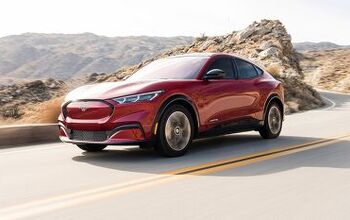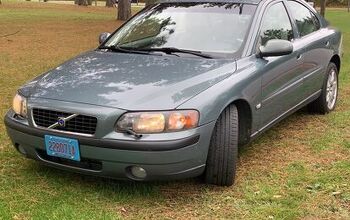Wards Auto: Industry Analysts Unsure If Ford Gained Advantage With The Aluminum 2015 F150

Ford dropped a heavy light weight military-grade aluminum gauntlet with a metallic thud when they announced that the aluminum-intensive F-150. With up to 97% of the body being made of aluminum, and with Ford’s claims that it has dropped 700 pounds off the truck’s curb weight, the industry took notice. So much so, that GM announced their plans for an aluminum Chevrolet Silverado and GMC Sierra shortly after the North American International Autoshow, where the F150 was debuted.
According to WardsAuto reported that some analysts are not quite as impressed, and are unsure whether or not it will make as large of an impact as expected.
“If you look at steels out there years ago, you couldn’t lightweight; they weren’t strong enough and you couldn’t (form) the shapes needed. Aluminum has come a long way, as well, but I think technologies like nanosteel are going to give automakers alternatives to aluminum so they can do lightweighting with better geometries and thinner materials.”
Parsons points at the current 2014 Chevrolet Silverado and GMC Sierra as an example of high strength steel’s effectiveness. He claims the ’14 GM trucks are 350 lbs lighter than the current generation F150. With Ford claiming a 700 pound weight savings from their current truck, the difference between the ’15 F150 and ’14 GM trucks would only be around 350 pounds, according to Parsons; a fairly negligible number when the difference in options on a truck can swing the curb weight by over 500 pounds, according to GM’s specs on the ’14 Silverado 1500.
“Each generation of truck is lighter. It’s always the most recent introduction that is the lightest in its class.”
Another issue is cost. David Cole, chairman of AutoHarvest and chairman emeritus for the Center for Automotive Research, touches on the issue
“It’s a big roll of the dice. Whether it’s an advantage or not is yet to be determined. The trade off from the consumer perspective is, ‘What is it going to save me vs. what’s it going to cost me? That’s an important part of the discussion.”
Along with the higher material costs and production costs with sheets of heat-treated aluminum, Ford is also pushing for more advanced engines. The direct-injected and turbocharged Ecoboost engines have been pushed hard by Ford in the current generation F150. At the time of this writing, the EcoBoost V6 is $1,000 more than the 5.0L V8; and $2,000 more than the base V6. Only the rowdy 6.2L V8 costs more.
Richard Schultz, a project consultant at Ducker Worldwide, mentions that
“It’s more expensive, but you have to add in the value of scrap, which is very valuable. And when you save so much weight you can make suspensions and other parts smaller and thinner.”
Cole touches on anther key point, the 2017 review for the 2025 CAFE regulations. Specifically chosen to take place after the next election, the next president could cancel that F150‘s chance if he or she chose to relax the standards. Ford would have spent millions to push out the technologically advanced F150 only to have the goalposts moved. Ford may enjoy having the most fuel-efficient pickup in the market, but the extra costs of the new aluminum body and engines could alienate buyers, sending them to cheaper, more traditional pickups.

More by Phillip Thomas
Latest Car Reviews
Read moreLatest Product Reviews
Read moreRecent Comments
- Jeff Not bad just oil changes and tire rotations. Most of the recalls on my Maverick have been fixed with programming. Did have to buy 1 new tire for my Maverick got a nail in the sidewall.
- Carson D Some of my friends used to drive Tacomas. They bought them new about fifteen years ago, and they kept them for at least a decade. While it is true that they replaced their Tacomas with full-sized pickups that cost a fair amount of money, I don't think they'd have been Tacoma buyers in 2008 if a well-equipped 4x4 Tacoma cost the equivalent of $65K today. Call it a theory.
- Eliyahu A fine sedan made even nicer with the turbo. Honda could take a lesson in seat comfort.
- MaintenanceCosts Seems like a good way to combine the worst attributes of a roadster and a body-on-frame truck. But an LS always sounds nice.
- MRF 95 T-Bird I recently saw, in Florida no less an SSR parked in someone’s driveway next to a Cadillac XLR. All that was needed to complete the Lutz era retractable roof trifecta was a Pontiac G6 retractable. I’ve had a soft spot for these an other retro styled vehicles of the era but did Lutz really have to drop the Camaro and Firebird for the SSR halo vehicle?


































Comments
Join the conversation
I don't think 50k is that far fetched. When I was shopping for new vehicles 50k was the sticker price of many of the midsize and larger crossovers. Sure you can get a discount on many except maybe Toyotas and Hondas but a decently equipped vehicle was very much in the 35k to 50k range. A Buick Enclave and other similar vehicles were easily in the 40 to 50k range. It is becoming more typical to see 40k as a typical price for an average midsize to full size car, truck, or suv. Factory incentives and no or low interest loans for 60 or more months are enticements used to push the inventory. After buying a new vehicle for my wife this past summer I experienced this first hand. I have never bought a vehicle on credit up until last summer and then when I did not get an additional discount for paying cash I took the 60 month loan for 0.9% interest even though I had the cash. Trucks for the most part will become more expensive and not just because of the aluminum. If Ford raises their prices to reflect the additional price of aluminum then GM and Ram will raise their prices and then offer discounts and low interest rates instead of lowering the price. There is only so much discounting and financing that the manufacturers and dealers can use to move the metal when the price still becomes too high after all incentives. Many of these fleet buyers or cheapskates will search for alternatives to the full size half ton trucks. These half ton trucks will become less popular with the average consumer and with many fleet buyers. There will still be a market for these trucks but it will be less than it is now. If what you are saying is true that the truck market is losing money and does not want to sell to cheapskates then many will seek less costly alternatives in less expensive new vehicles or in the used market. The consumer always adjusts to the market and looks for alternatives when they feel the price of anything becomes higher than they are willing to pay. Demand is limited by price. At a certain price point demand will level off. This is not necessarily a bad thing because then competition will provide more affordable alternatives.
I miss my 1982 Ford F100, short-bed, stick shift…..Wimbledon White…..These new trucks are too big and look like cartoons….sad….As we say here on Cape Cod, these new trucks are for, "Captain Ride- Arounds"